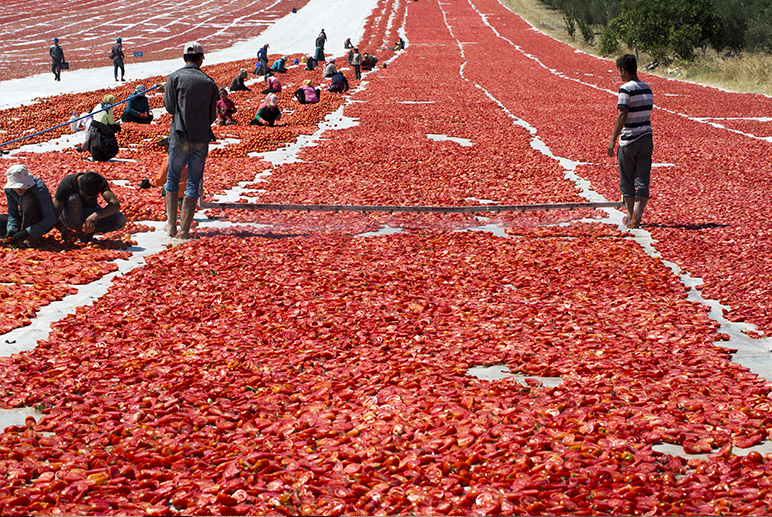
INTRODUCTION:
The process of preserving food. Many folktales describe ways of preserving foods in one way or another according to local and cultural traditions. Dehydration Methods help to prevent food from spoilage and to maintain it for a longer period of time while keeping it suitable for consumption.
DEHYDRATION METHODS:
- SUN DRYING
- TRAY DRYING
- FREEZE DRYING
- VACUUM MICROWAVE DRYING
SUN DRYING:
- This process beats the other methods in terms of cost due its inexpensive nature; using sun as its thermal source. Sun drying basically involves complete dependence on the power of the sun with the help of natural airflow.
- It is a gentle process in which there is a simple reaction to the heat of the sun with your food.
- Since the sun drying method involves being slow and steady, it has an interesting and unique taste in that it provides sun dried food that can be quite different from fresh food.
- It is also a traditional drying method to reduce the moisture of fruits by spreading under the sun.
- Warmer temperatures evaporate the moisture and lower humidity allows moisture to move quickly from the fruit to the air.
- However, there are many disadvantages associated such as the longer time required to dry, hot climate and daylight, and risk of invasion by animals and unwanted microorganisms.
TRAY DRYING:
- A tray dryer is similar to a convection drier, which is placed in enclosed insulated chambers and trays on top of each other in the tray.
- Input materials are batch fed, placed in trays and loaded into ovens for drying. Dryers are used in processing where drying and heating is an important part of the industrial manufacturing process, like dried fruits.
- Tray drying means dehydrating small pieces of fruits from a source of hot dry air or the sun until it is dry enough to store at ambient temperature with minimal spoilage.
- Despite its poor re-hydration properties and shrunken appearance, this process requires a short period of time along with controlled humidity and heated air.
FREEZE DRYING:
- Freeze-dried is a special form of drying that removes all moisture and has less effect on the taste of food than normal dehydration.
- Freeze drying is a water removal process commonly used to preserve pear material, the fruit is placed in a vacuum chamber in low heat to increase shelf life.
- This process works by freezing the material, then reducing the pressure and adding heat to neutralize the frozen water in the material.
- Unlike the other drying methods, this method allows the dried mango to retain its shape, retain the highest color value, and provide a great rehydration property despite its high costs.
- Foods that contain adequate amounts of water are very easy to work with and will maintain their initial shape after the freeze-drying process is complete.
VACUUM MICROWAVE DRYING:
- The microwave generates a specific amount of energy, easily shortening the drying time.
- In addition, the boiling point of water is lowered under vacuum, causing a high temperature inside the dried particles on the surface of the product.
- Microwave vacuum drying is a dehydration process that uses microwave radiation to generate heat at full pressure (chamber pressure).
- During vacuum drying, high-energy water molecules propagate to the surface and evaporate due to low pressure.
- Microwave vacuum drying is a dehydration process that uses microwave radiation to generate heat at full pressure (chamber pressure).
- During vacuum drying, high-energy water molecules propagate to the surface and evaporate due to low pressure.
- Due to the absence of air, vacuum drying inhibits oxidation and maintains the color, texture and taste of dried products.
- This device can improve the quality of products and the equipment can prolong the shelf life of food, preserve the original taste and nutrients of food, maintain physical activity of raw materials, enhance the function of health food and increase the value of agricultural products can do.
- This method provides better flavor retention, great rehydration, least nutrient loss and least color change among other thermal drying along with a faster drying rate compared to freeze drying.
- Vacuum microwave not only dry the mango quickly, it also reduces the amount of fibers and the microorganism present in the pulpy part of the fruit so that the fruit taste distorted at some rate and the vacuum drying also reduces the amount of watery contained and particularly in closed environment no other microorganism can enter into the fruit.
